KILIMANJARO PACKING EQUIPMENTS & GEARS
Packing your Kilimanjaro kit is one of the most important steps on the way to a successful climb.
Packing your Kilimanjaro kit is one of the most important steps on the way to a successful climb.
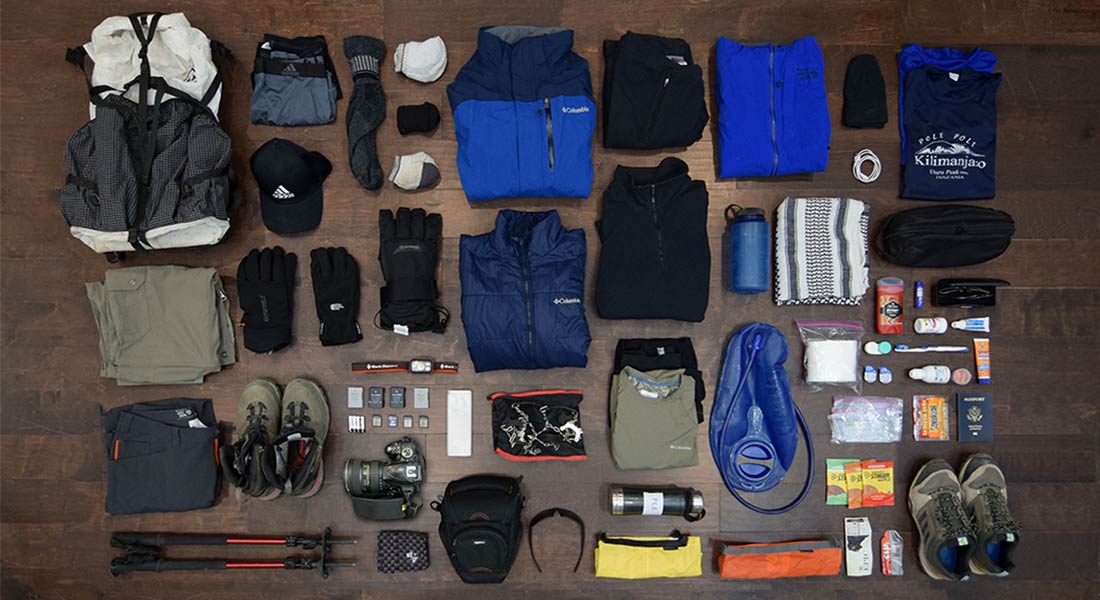
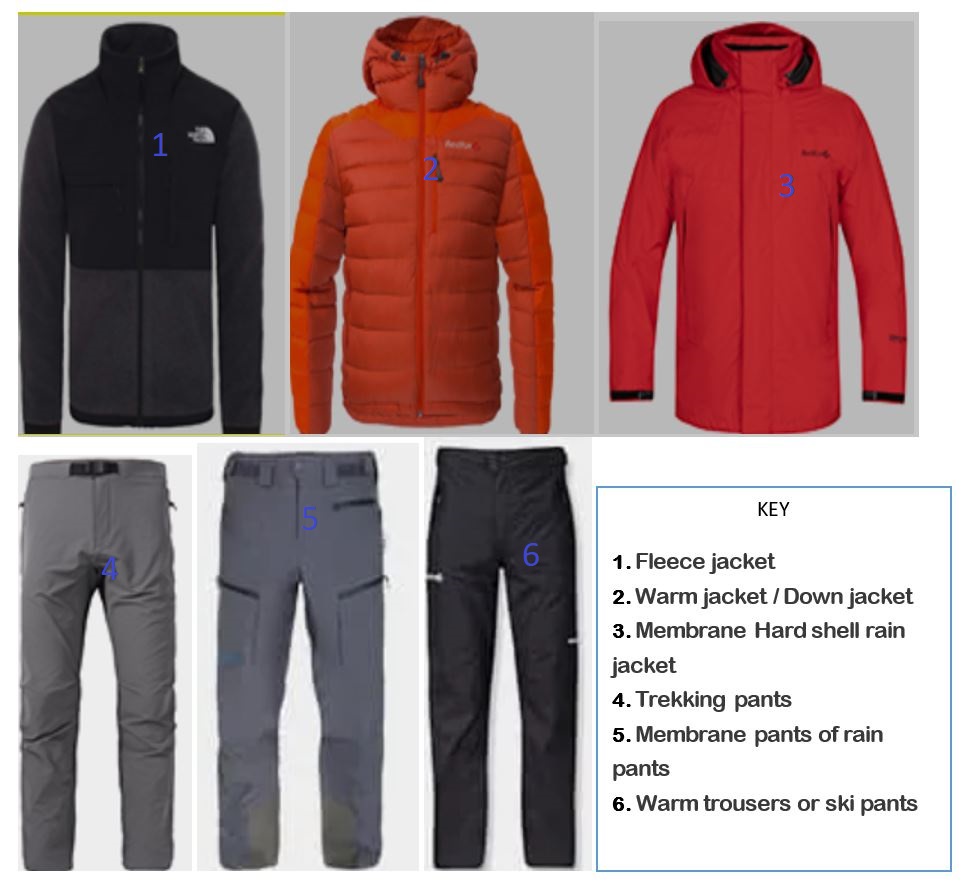
On Kilimanjaro you will be climbing through four different climate zones (rainforest, moorland, alpine meadows, and Arctic desert).
At the lower altitude of tropical rainforest, the weather is mostly humid and hot, while in the summit zone it is snowy, windy and frosty.
In addition, while the temperature is usually high during the day, it can drop to the freezing point at night.
Therefore You will need to have three types of jackets for this trip:
1.Fleece jacket as an insulation layer:Can be worn as a separate piece of clothing or over a trekking shirt.
2. Warm jacket / Down jacket: is used in camps to keep you warm during chilly evenings and for the summiting part of your trip
3.Membrane Hard shell rain jacket (Gore-Tex or other):This jacket is meant to protect you against wind and drizzly rain before you reach the summit camp. On most of the Kilimanjaro
days it would be your third layer, after thermal underwear and a fleece jacket.
TROUSERS
4.Trekking pants:needed for the higher elevation parts of Kilimanjaro and chilly evenings in the camps.
5.Membrane pants of rain pants:Can protect you from rain
6.Warm trousers or ski pants:To keep worm on summit and at night
OTHER CLOTHES
You will need 5-6 pairs of underwear for your Kilimanjaro Climbing & having 2-3 pairs of thermal underwear (base layer) is necessary for this trek - you’ll be wearing
the first pair on your usual days, and the second one on the summit night. Also, sleeping in thermal underwear is more comfortable than without it.
The first set can be made of light synthetic fabric so that it dries faster. The one used for the summiting should contain warmer, more natural components, e.g. wool.
Any branded thermal underwear will be perfectly suitable for your Kilimanjaro Climbing.
As far as shirts for Kilimanjaro expeditions are concerned, having 3-4 short-sleeved and 2 two long-sleeved shirts is necessary. Avoid cotton, as it is bad for wicking. Fabric should be light and
‘breathable’. Shirts made of the mixture of polyester and spandex or nylon are excellent.
On Kilimanjaro Climbing, you will need two types of bags: a daypack that you’ll be carrying yourself and a duffle bag that will be taken care of by a porter.
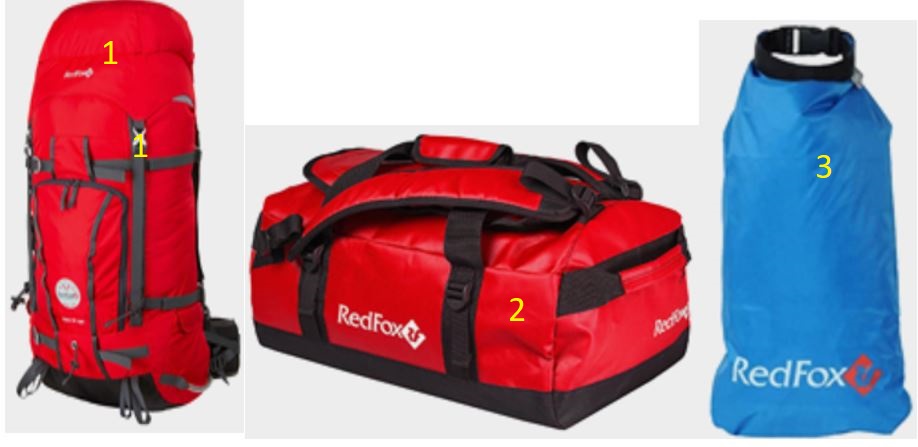
1. A DAYPACK: That will carry your daily essentials, such as: sunglasses, sunscreen, rain poncho, flashlight, flask with water and snacks.
It is also the right place to put your gadgets, for example: your camera and smartphone.
2. A DUFFLE BAG: That will keep most of your Kilimanjaro clothes and gear, such as hiking boots (unless you’ve decided to put them on straight from the first day), sleeping bag and more. A porter will be carrying it all the time.
3. A DRY BAG: Putting it inside your duffle bag or backpack can help you keep all your Kilimanjaro gear dry and fit for use
You are required to drink at least 3-4 liters of water every day, so a flask is one of the key items for this trip.
It is also recommended to have a thermos for hot tea/coffee. Though the guides normally carry one thermos each for the hikers to have a hot drink on the way, taking your own means extra supply, which will be never superfluous on Kilimanjaro. More tea or coffee means more energy, which you will surely need.
For this trip you will need high-quality hiking boots(Boots should have good ankle support, & of medium weight), trekking sneakers (optional) and trekking socks.
Preferably, laces should get fixed to the speed hooks for better comfort and protection. It is critically important to break in your boots before the start of your Kilimanjaro trip.

Kilimanjaro headgear has both mandatory and optional items.
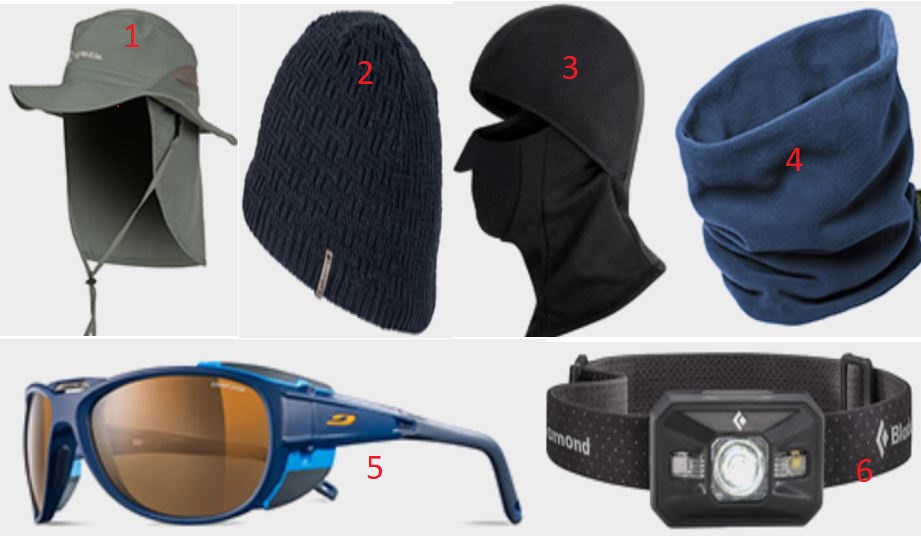
1. SUN HAT:This headgear will protect your face from sunburns and overheating.
2.BEANIE: To keep your head and ears warm
3. BALACLAVA (Option): Will protect your chin, nose, cheeks and forehead from wind on the summit night.
4. NECK WARMER (Option): It's provide good protection to your neck and face if it gets very cold. It’s also a good solution against dust.
5. SUN GLASSES: It's provide good UV protection. At the elevation of 6,000 m above the sea level UV radiation is much higher than at sea level.
6. HEAD LAMP: You’ll need it for moving around the camp after sunset when finding your tent can become quite a task, also during the summit, normally hikers start at midnight aiming to reach Uhuru peak
by sunrise. So a headlamp will be a great help to see the path.
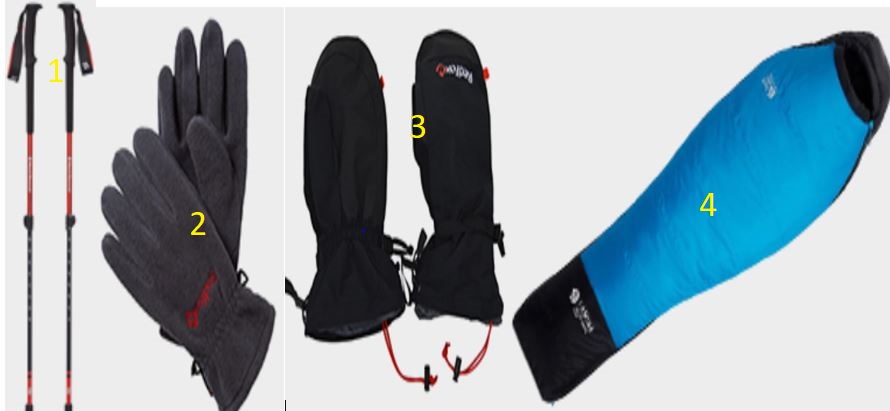
1. TREKKING POLES: are a highly recommended item on your Kilimanjaro packing list, not only because it is a matter of comfort, but because of health concerns.
2. GLOVES (Lightweight gloves): are meant to keep your hands warm starting from the second day of your expedition.
3. GLOVES(warm gloves ): You will also need warm gloves or mittens for the summit night.
4. SLEEPING BAG: will be necessary in any camp and on all routes.